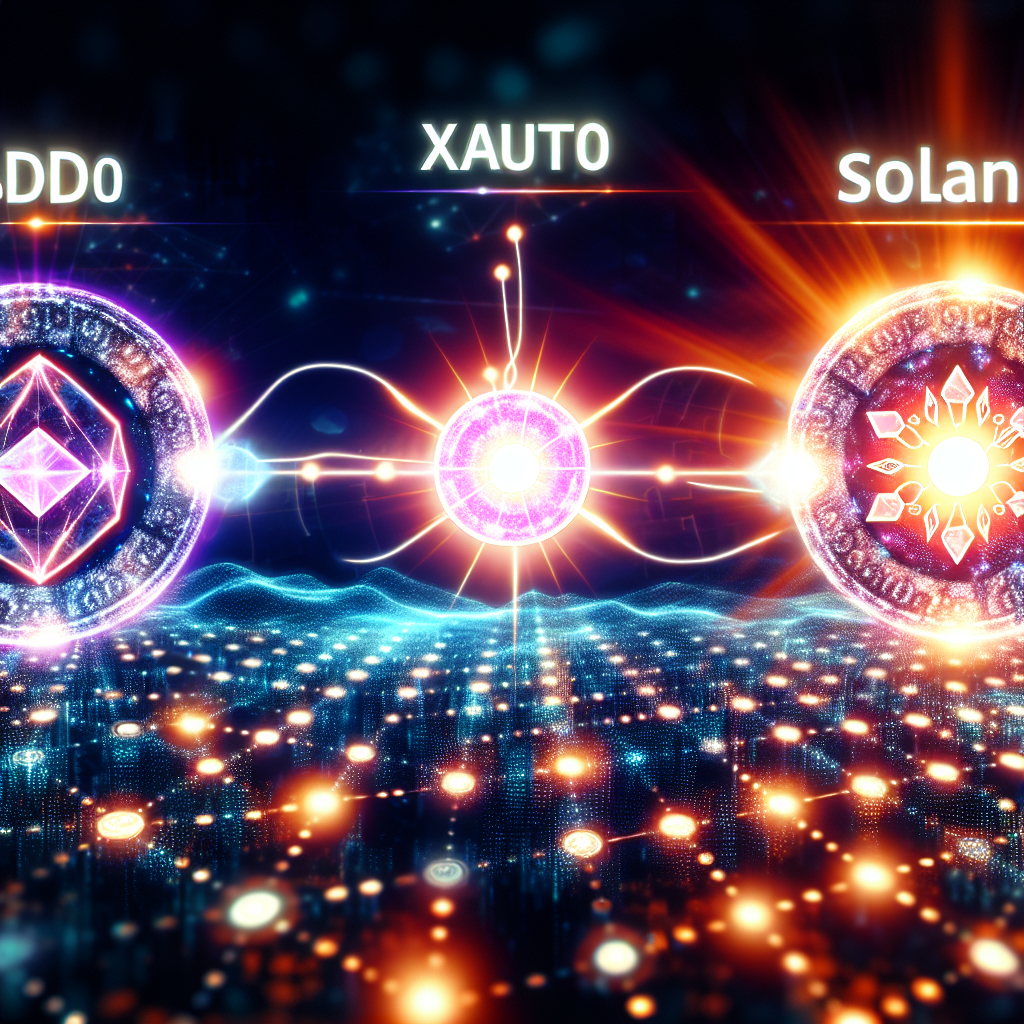Omnichain iterations of Tether’s stablecoin USDt (USDT) and Tether Gold (XAUT) are now accessible on Solana via Legacy Mesh, an interoperability network built on LayerZero that connects native stablecoin liquidity across various blockchains; this could position Solana as a formidable settlement layer for on-chain finance and real-world assets (RWAs).
The launch of USDT0 and XAUT0 effectively brings Tether’s digital dollar and tokenized gold to Solana, potentially merging stablecoin liquidity with real-world asset applications.
In contrast to Tether’s USDT stablecoin, USDT0 is not issued by Tether. Instead, it is a part of a third-party omnichain liquidity network aimed at integrating existing native USDT liquidity across multiple blockchains. Consequently, the integration with Solana potentially enhances Tether’s omnichain presence, following prior USDT0 launches on Ethereum, OP Superchain, Polygon, TON, and Arbitrum.
Legacy Mesh facilitates interoperability by connecting native USDT liquidity pools, allowing stablecoins to transfer between networks without depending on wrapped tokens or third-party bridges. Nevertheless, bridging risks and liquidity fragmentation continue to pose challenges across multichain systems, complicating predictions on how much USDT liquidity will actually transition to Solana.
As stated by the companies, this expansion broadens access to Tether’s USDt, the largest stablecoin by market capitalization, with a circulating supply of around $180 billion.
Since its inception, USDT0 products have managed over $25 billion in bridge volume across more than 32,000 transactions, according to the companies.
Tamar Menteshashvili, the head of stablecoins at the Solana Foundation, mentioned that the integration will encourage growth in decentralized finance, payments, and institutional-grade financial products on Solana. Practically, this could encompass treasury management, remittances, and collateralized lending.
While XAUT0 is less recognized, it represents an omnichain version of Tether Gold, which has gained prominence during the yearlong increase in gold prices. XAUT brings the precious metal onto the blockchain, endowing it with programmable features akin to digital assets like Bitcoin (BTC).
Related: Ethereum Foundation’s near-term UX priority is interoperability
Stablecoins, RWAs gain traction on Solana
Solana, well-regarded in crypto circles as one of the fastest-growing blockchain networks, is drawing increasing interest from traditional finance. With a market capitalization of about $112.6 billion, Solana ranks as the second-largest smart contract platform following Ethereum.
According to Matt Hougan, chief investment officer at Bitwise Asset Management, Solana is positioned to win over Wall Street, possibly becoming banks’ preferred network for stablecoin transactions.
Simultaneously, RWA tokenization on Solana has been gaining momentum. Protocols like Splyce and Chintai have recently launched products allowing retail investors to access tokenized securities directly on the network.
Despite this progress, Solana currently constitutes only a minor portion of the overall RWA market, with approximately $694 million in tokenized assets on-chain, based on industry data. Ethereum remains the largest network for RWAs, holding nearly $12 billion in value.
This disparity highlights the competition among blockchains vying to attract institutional finance and real-world asset flows, particularly in light of a pro-industry regulatory shift in the United States.
Magazine: Solana Seeker review: Is the $500 crypto phone worth it?

